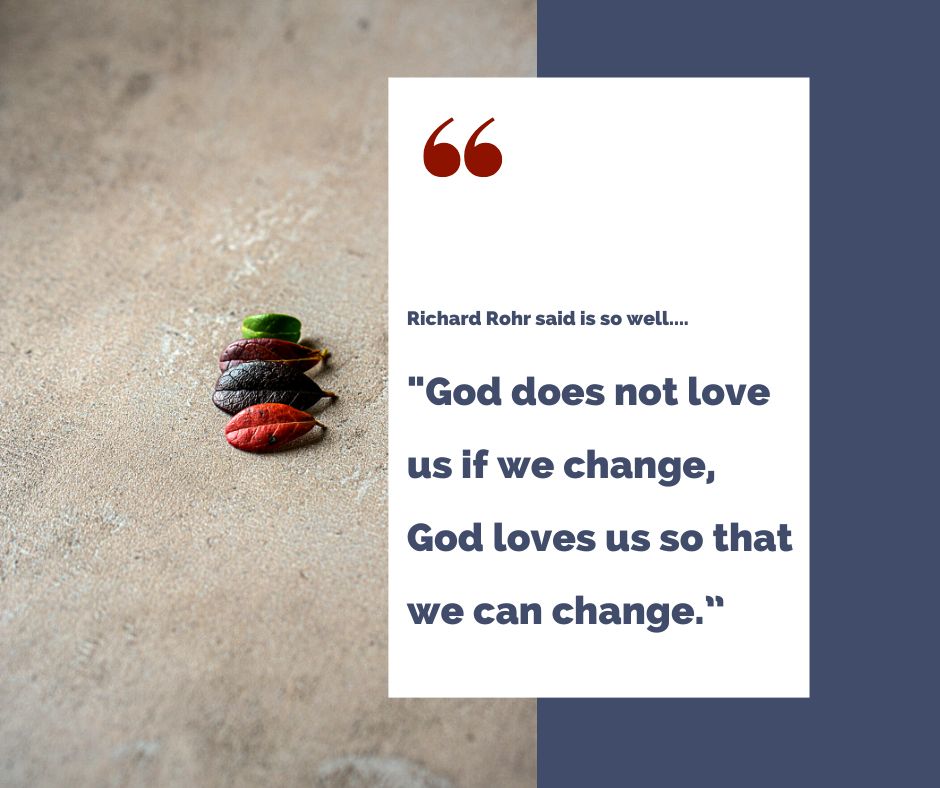What is Jesus’ ‘Theory of Change’?

Jesus did not try to change one person. He certainly didn’t set out to change the world.
We hear a lot these days about “theory of change.” It’s a term in non-profit, philanthropy and development that describes the organization’s goal of social change and the step-by-step process for achieving it. I’m sure it does all these people a world of good, but it doesn’t begin to describe the way Jesus allowed change to happen.
If Jesus has a theory of change, it is this: Live a changed life. That’s pretty much it. Live a changed life yourself. Jesus trusted that when we engage someone from a heart of love, when we already accept people as they are—that’s when people are free to take a step in a new direction. The most powerful force for change, in other words, is the example of one humble person who just shows the way.
Jesus didn’t have a three-point plan or a five-point strategy. In fact, to many he looked weak and passive. They wanted him to deliver the Kingdom—now. And all he did was sit down and eat with people nobody wanted to get near. All he did was touch people who were sick, teach people who were soul-starved, and feed them with bread and fish when they were physically famished. He invited people to join his community of love and justice, but he wasn’t any good at “closing the sale.” If they weren’t ready, like that Rich Young Ruler, he let them go in love.
Jesus knew that people change not when they feel the pressure, but when someone loves, affirms and trusts them. Richard Rohr said is so well: “God does not love us if we change, God loves us so that we can change.”
Many of us want to help others, revamp systems and institutions. Change the world. In our zeal, we end up (however subtly) pushing people to change. Yet every over-determined effort produces the opposite result. Jesus’ genius was in not pushing. He simply walked alongside people, and the beauty of his heart pulled people onto a new path. We can’t be Jesus exactly, but when we follow his example, we can find ourselves drawn into in a new place of blessing, and—without really trying—pull others with us.
Today’s Question:
What is Jesus’ ‘theory of change’?
What or who am I trying to push? And what if I just stopped pushing?
Question #14 “Are you spiritually bypassing?” comes Sunday March 26.
Thank you, David, for reminding us that the core of Jesus’ ministry was “touch, teach, feed.” Also the power of his example. And the power of his love, not an “if you change” love but a “so you can change” love.
That’s been a lifesaving truth for me, an antidote to deadly perfectionism. I have several affirmations I say regularly and this is one: “With God’s help, I love myself just as I am, and this gives me the power to improve and move forward today.”
Love these posts. I just realized this morning that I’ve adopted them (first reading then responding) as my Lenten discipline. Thank you, David.
Thanks, David. It’s the difference between being invited and driven – something a lot of groups forget…peace, Johnna
“… and the beauty of his heart pulled people onto a new path.” So many good nuggets today. Thanks, David
A few more questions you inspired: “What is helpful …for the kingdom? For the people in my circle of influence?” Immediate needs being met lead to open spirits. We plant. We don’t force growth.
“We plant. We don’t force growth”
As a gardener I know that’s true, but hard to allow—I want those things to jump out of the ground!
Very hard to allow! I’m trying to learn how to be better planter.